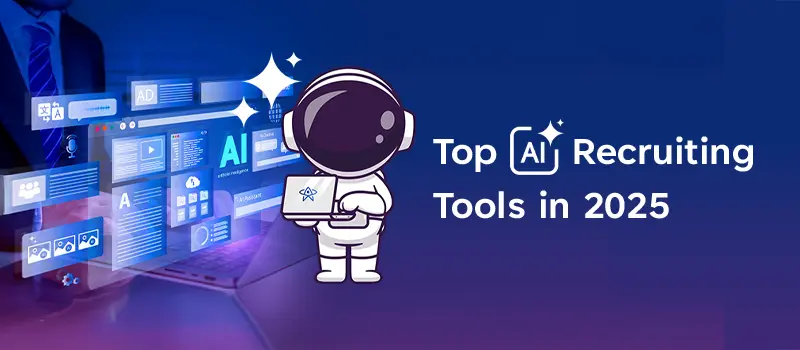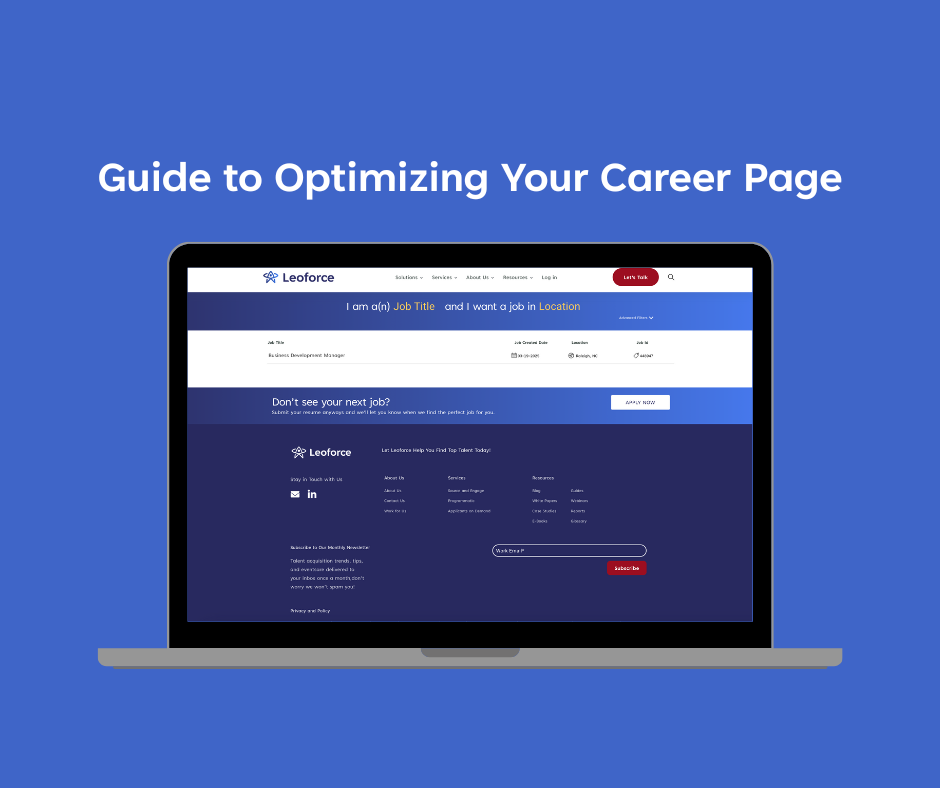How to Add New Recruiting Power to your ATS

Recruitment processes are becoming smarter by the day. This means that finding and recruiting the best resources from available talent pools needs to be faster, accurate and extremely efficient. Why? An organization that continues to stick with traditional hiring processes is likely to spend a lot more on recruiting in terms of both money and time. No recruiter wants that.
An easy way to resolve this challenge is by introducing ATS or Applicant Tracking Systems in an organization’s recruitment process. From attracting the right talent, to engaging with them, nurturing their interests and expectations and bringing them on board with interviews and offer letters, an applicant tracking system can redefine the recruiting process. This article explores the benefits of an applicant tracking system, the features that are provided by most applicant tracking systems and how to select an applicant tracking system.
Let’s understand what is an applicant tracking system.
Essentially, an ATS will provide end to end support to the recruitment process of an organization by automating quite a few of the tasks.
But does it yield results? Most certainly. In fact, the average conversion rate for job seekers who visit an ATS-populated career page is 20%. That is a very promising statistic for recruiters in this competitive environment. Let’s understand how this feat is possible.
Features of an ideal applicant tracking system
Here are five important features of an applicant tracking system that are a must have while selecting an ATS.
Candidate sourcing
An ATS is able to do more than just post opportunities on job boards. It can help an organization create a candidate database that can refine and sort candidates based on their credentials. That way if an organization ever needs to hire for a vacant position, it does not need to start from scratch.
Scheduling and managing interviews
A Glassdoor United States Site Survey in 2017 revealed that 96% of job seekers say that it’s important to work for a company that embraces transparency. An ATS can quickly and easily help recruiters schedule interviews by integrating with the hiring manager’s calendar. This also makes for a good candidate experience as an ATS can help keep the process smooth and more importantly, transparent.
Managing candidate relationships
Just like customers, candidates are also external stakeholders for an organization. It is only natural to ensure good candidate relationship management. CRM tools within an applicant tracking system will help recruiters maintain higher engagement levels among candidates making them an employer of choice.
Analytics and insights
When an organization recruits at a mass scale, it is important to assess candidates across several parameters like soft skills, work skills, team work, aptitude etc. An ATS can help create individual dashboards and also analyze each profile to zero in on or filter out candidates based on patterns, anomalies and other meaningful insights.
Recruitment marketing
A 2019 Open University survey stated that 79% of job seekers say they are likely to use social media in their job search and this increases to 86% for younger job seekers. This is where an ATS can really help optimize the recruitment process. A good ATS can actually help promote open opportunities not just on job boards like LinkedIn, but at every single touchpoint with potential recruits. So be it social media, university websites for campus recruitment, internal organizational job and message boards or external recruitment portals, an ATS can help recruiters spread out in their hunt for the right candidates.
Suggested Read: A Comparative Analysis Between the Most Popular ATS on the Market
Benefits of an applicant tracking system
Before any recruiter opts for an applicant tracking system, they must ask themselves an important question. “What’s in it for me?”
Here are five important benefits of integrating an applicant tracking system into your recruitment process.
Automate mundane manual processes
It is said that a recruiter spends a mere 6 seconds on a single resume. That is not enough time for a human to grasp the contents of a resume, so there are bound to be slip ups and good candidates might be filtered out in this process. A machine, on the other hand, does not need more than six seconds per resume to find candidates with relevant qualifications and work experience. With an ATS, a recruiter can pass on the mundane task of sorting through resumes to a machine.
Don’t just track candidates, track the job opportunity
Most recruiters would believe that an ATS will help keep track of all the candidates that have applied to an open position. But an ATS can do so much more. An applicant tracking system will give you insights regarding the job posting. It will tell chart the number of applicants, stages of the application process, reasons for drop out etc. This will help recruiters work on actionable insights and better position the opportunity to attract more candidates.
Easier selection from existing database
Because an ATS can keep track of every single application that moves through its systems, it has an existing database of candidates who are genuinely interested in working for an organization. Recruiting from an existing data base will save resources on promotions and is likely to reduce the chances of dropouts.
Hear back from candidates
Feedback, both good and bad goes a long way in help organizations improve their operations. An ATS is responsible for keeping candidates engaged from end to end of the recruitment process. This also means that is can collect feedback from a candidate at the end of the process.
Savings in time and money
Recruitment is an expensive process both in terms of time and money. In fact, a study by Harvard Business Review has revealed that companies that do not use an applicant tracking system are likely to pay more than $10,000 per hire in lost productivity. An ATS will not only reduce the amount of time taken to hire a candidate, it will also reduce the number of times a position will be filled by finding high quality talent, thereby reducing cost of acquiring talent for an organization.
Now that we have walked through the features and benefits of an applicant tracking system, we must understand the steps to choose the right applicant tracking system for an organization.
How to choose the right applicant tracking system
ATS systems are designed to maximize the efficiency of a recruitment process. That is why most are affordable as well as user friendly. That being said, it is very important that an organization select an applicant tracking system that is compatible with their hiring process. The right ATS will not only make the current hiring process easier, it will further optimize it for better efficiency.
Identify and zero in on your ATS requirements
It is important that an organization has a clear idea of its hiring goals before selecting an applicant tracking system. Keep parameters like hiring time, hiring size, job hierarchy, nature of the vacant position etc in mind before employing an ATS.
An ATS needs to be people friendly
A major task for an applicant tracking system is to communicate with stakeholders – internal as well as external. It is important that an ATS provide easy and enhanced user experience at every touch point.
Pricing matters
For recruiters, each candidate is an expenses. A good ATS system needs to be affordable or needs to be capable enough to prove its worth in terms of cost efficiency.
Choose an ATS that can be integrated with AI systems
It is important to choose an Applicant Tracking System that can integrate with existing AI systems at an organization. This is important as AI can greatly optimize the capacity of an applicant tracking system. Here’s how an AI integrated ATS can benefit an organization.
Nip recruiter bias in the bud
An AI-powered ATS does not recognize or discriminate on grounds of age, gender, race or ethnicity. This improves the overall hiring process, promotes an organization that values equal opportunity principles and boosts the credibility of the recruiters.
Streamline resumes faster
Job opportunities can receives a lot of resumes, however, not all of them are relevant to the role offered. Manually sorting through resumes can be time consuming and runs the risk of human errors. With an AI-powered ATS, a recruiting team can easily sort through resumes and evaluate relevant candidates.
Suggested Read: The Ultimate Guide to Recruiting Platforms and Hiring Tools
Hire recruits that are a better fit for the organization
Because an AI-powered ATS eliminates manual tasks, recruiters have more time to evaluate candidates who will be a better fit for an organization’s culture.
Remember, an ideal applicant tracking system will help automate manual tasks and will help recruiters easily communicate with candidates. It will help track progress at each step of recruitment. It will point out actionable insights and will streamline the candidate filtration process. Even though it is up to the recruiting team to best optimize the capabilities of an ATS, implementing an applicant tracking system can prove to be a key factor in the success of a recruitment process.





